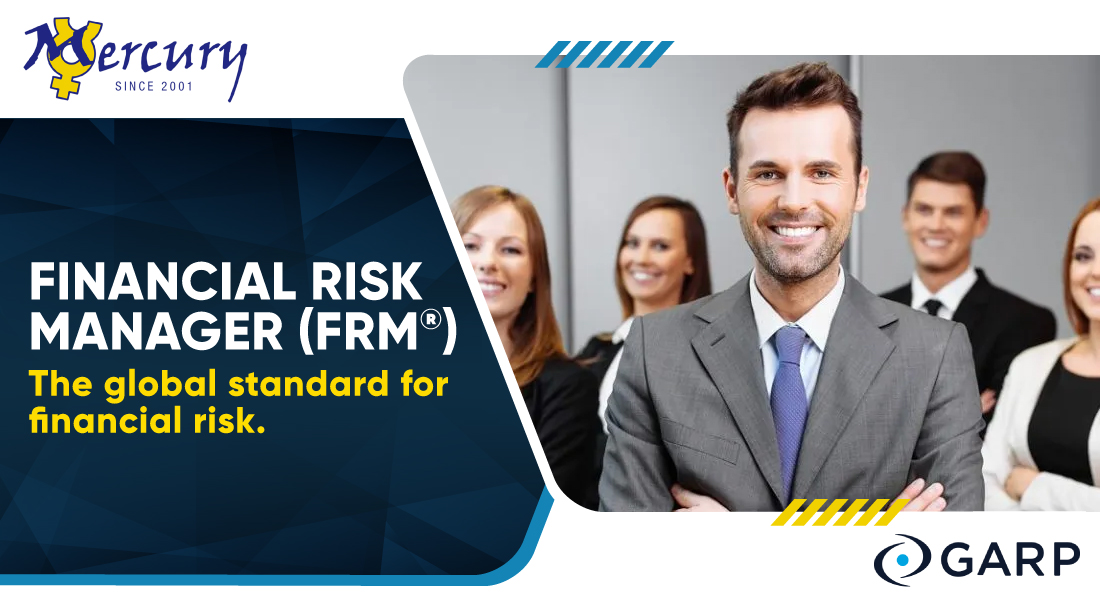The best known and most respected designation in financial risk, the FRM Certification offers a
competitive advantage to those seeking to grow their career in risk. With the certification, FRMs
demonstrate to employers that they possess a mastery of the skills and tools necessary to assess and manage the challenges of the dynamic financial services industry
For more than 20 years, the Financial Risk Manager (FRM®) has set the global standard for risk management. Developed by the world’s leading risk practitioners, the designation signifies a mastery of the skills and knowledge needed to help organizations succeed in today’s rapidly changing financial landscape.
GARP | The Global Association of Risk Professionals membership organization focused on elevating the practice of risk management. GARP offers role-based risk certification — the Financial Risk Manager (FRM®) and Energy Risk Professional (ERP®) — as well as the Sustainability and Climate Risk (SCR®) Certificate and.. Founded in 1996, , GARP is headquartered in Jersey City, USA
The FRM Program is developed under the guidance of the FRM Committee, which is comprised of prominent global risk management professionals and academics. The FRM Committee establishes the topic areas tested on the Exam on an annual basis. To further align with industry needs and calibrate understanding of the demands of the global risk management community, GARP also conducts formal surveys designed to determine the knowledge, skills, and abilities required of effective risk managers. This process helps ensure that successful candidates are prepared to effectively contribute to their organizations
THE FRM PROGRAM HAS BEEN DEEMED EQUIVALENT TO A MASTER’S DEGREE (MBA) IN: UNITED STATES, CANADA,UNITED KINGDOM, EUROPEAN UNION, HONG KONG, TAIWAN, SINGAPORE, AUSTRALIA, INDIA, SOUTH AFRICA
TOP BANKS AND COMPANIES EMPLOYING FRMs
ICBC
Bank of China
HSBC
Agricultural Bank of China
Citigroup
KPMG
Deutsche Bank
Credit Suisse
UBS
PwC
China Construction Bank
JP Morgan Chase
Wells Fargo
Bank of America
Banco Santander
*banks ordered by the article below
Source: Chen, Liyan. “2015 Global 2000*colon; The World’s Largest Banks.” Forbes. Forbes Magazine, May 6, 2015. Web. July 23, 2015.
Eligibility
There is no minimum eligibility requirement to register for the FRM program
WHO SHOULD CONSIDER THE FRM CERTIFICATION?
Undertaking the rigorous course of study to become an FRM signals a commitment to an area of financial services that is emerging as a critical area of need at companies worldwide.
FINANCE PROFESSIONALS
The FRM helps professionals in risk management, investment management, or other critical areas of the financial services industry broaden their knowledge of financial risk and enhance their skill sets.
CAREER CHANGERS
Whether a candidate works in financial risk or is interested in transitioning to a risk- related role, becoming an FRM can help accelerate any career. Professionals from non-finance areas such as credit, operational, and liquidity risk, and non-risk roles become FRMs to develop specialized, practical knowledge that can be applied to the global financial market.
STUDENTS
At a time when many universities are moving online, earning the FRM Certification can be completed more quickly and more efficiently than most degrees. For students with an interest in finance, the FRM designation demonstrates to future employers an ability to master complex, real-world challenges. Students may elect to sit for the FRM Exam during or immediately after completing their studies.
The FRM consists of two multiple-choice exams. The FRM Exam Part I consists of 100 equally weighted questions, and the FRM Exam Part II consists of 80 equally weighted questions. Candidates are allotted four hours to complete each Exam. Part I is offered via computer based testing (CBT) , while Part II will be given via pencil and paper in May and via (CBT) in December.
The Exams are comprehensive, practice-oriented assessments that cover the fundamental tools and techniques used in risk management, their underlying theories, and the major sub-areas of risk
Part I
• Foundations of Risk Management
• Quantitative Analysis
• Financial Markets and Products
• Valuation and Risk Models
Part II
• Market Risk Measurement and Management
• Credit Risk Measurement and Management
• Operational Risk and Resiliency
• Liquidity and Treasury Risk Measurement and Management
• Risk Management and Investment Management
• Current Issues in Financial Market
FRM exams
Thrice a year for Part 1 candidates (May, July and November)
Twice a year for Part 2 candidates (May and December).



